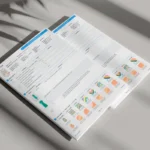
Retail pricing refers to the process of setting the price at which a product or service is sold to end consumers. Retail price is the final price that customers pay for a product after taking into account the cost of production, distribution, marketing, and other expenses incurred by the retailer. Additionally, factors like brand reputation, exclusivity, and perceived value may also influence the retail price of fashion items.
Retail price is a critical factor in the success of a retail business, as it directly affects consumer demand, profit margins, and overall competitiveness.
Fashion Retail Pricing
The fashion industry is a perfect example of how retail pricing works. In this industry, pricing is an essential element of a brand’s image, and it has a significant impact on the success of a business. High-end fashion brands, such as Chanel and Gucci, set their prices at a premium to appeal to their target market, which includes affluent customers who are willing to pay a premium for luxury items. These brands’ retail pricing strategies aim to convey the exclusivity, quality, and prestige of their products, rather than just the product’s functionality.
On the other hand, fast-fashion brands, such as Zara and H&M, follow a low-price strategy to appeal to a broader audience, including value-conscious customers who prioritize affordability and trendiness over brand prestige. These brands use various tactics, such as economies of scale, vertical integration, and agile supply chain management, to keep their costs low and prices competitive.
The fashion industry also uses dynamic pricing, a pricing strategy that adjusts prices in real time based on changes in demand, supply, and other market factors. For example, during seasonal sales, fashion retailers use price reductions to clear out old inventory and make room for new collections. In contrast, during peak demand periods, such as holidays and special events, fashion retailers may increase prices to maximize profit margins and take advantage of high demand.
The Impact of Fashion PLM on Retail Pricing
Product lifecycle management (PLM) is another critical factor that affects retail pricing in the fashion industry. PLM refers to the process of managing a product’s entire lifecycle, from ideation to production, distribution, and end-of-life. Fashion PLM software helps designers, manufacturers, and planners make clothing by making tasks like designing, finding materials, estimating costs, and planning production easier and faster. PLM software allows retailers to track and manage the costs associated with product development, which helps them set accurate retail prices that reflect their actual production costs.
For example, a retailer may use fashion PLM software to track the cost of materials, labor, and shipping associated with the production of a particular garment. This information can then be used to calculate the product’s total cost and set a retail price that covers these costs while also providing a reasonable profit margin. PLM software can also help retailers identify areas where they can reduce costs, such as by optimizing their sourcing or production processes.
Conclusion
In conclusion, retail pricing is a complex process that involves various factors, such as the cost of production, distribution, marketing, and other expenses incurred by the retailer. In the fashion industry, retail pricing is an essential element of a brand’s image and has a significant impact on a business’s success. High-end fashion brands use premium pricing to appeal to their target market, while fast-fashion brands use low-price strategies to appeal to value-conscious customers. PLM is another critical factor that affects retail pricing in the fashion industry by allowing retailers to track and manage their costs accurately and set prices that cover these costs while also providing a reasonable profit margin.
With comprehensive features and accurate cost tracking, Wave PLM can help you understand how PLM affects retail prices in the fashion industry. Plus, with our 3-month free demo, you can explore all the possibilities and see if Wave PLM fits your business needs. Give it a try today!





Leave a Reply